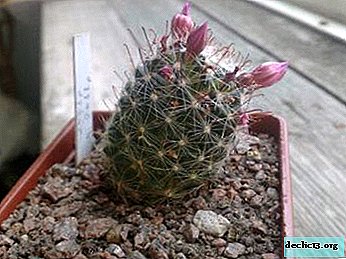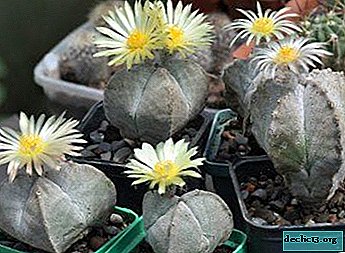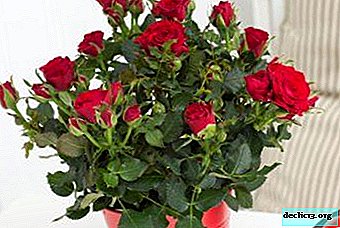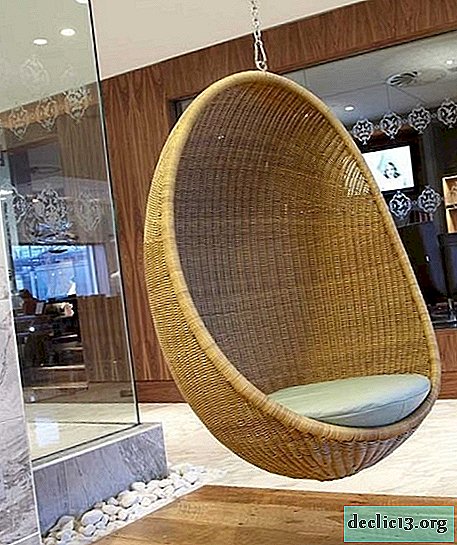Decoration of gardens and parks - Wisteria yellow. Photos, planting and care features
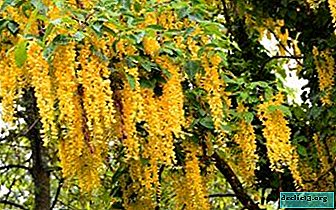
In the southern regions, and sometimes in central Russia, you can see trees with huge hanging yellow tassels of inflorescences in decorative gardening. Most often, this is anagovirus bean broom, or yellow wisteria.
The article provides a complete botanical description of the plant and its photo. Rules for proper flower care: what optimal temperature regime to choose, how to water, the right lighting, which soil and pot prefers wisteria, as well as tips on pruning, transplanting and feeding. A little about the characteristics of reproduction, flowering, possible diseases and pests. Enjoy reading.
Botanical Description
The botanically correct name for yellow wisteria is anagirola bobovnik, or Golden rain (Laburnum anagyroides). It does not belong to the genus Wisteria (Wisteria) and was named so for its resemblance to it. Both genera belong to the legume family and are close relatives. In some regions, it is mistakenly called yellow acacia.
Bobovnik Golden rain - deciduous shrub or tree with a height of 4-8 m (there are also specimens up to 12 m high) and a crown span of 3-4 m. The bark at the trunk is gray-green or brownish-green, at young branches - dark green . Young shoots are slightly pubescent, drooping, like young branches. Petiole leaves, with the next arrangement, are ternary-complex. The length of the sheet is 3-7 cm, the width is about 3 cm, the shape is obovate.
Moth type flowers characteristic of legumes. Color - rich yellow, for which the plant got its popular name. Inflorescence is a drooping long brush reaching 15-25 cm. It blooms in early summer.
The plant is poisonous because it contains cytisine in its juice.This is a thermophilic plant, whose homeland is the Caucasus and Crimea. Because of its decorativeness, it was brought to Europe, as well as to the territory of New Zealand and Australia. It is cultivated not only as a decorative culture, but also as a source of valuable wood.
Photo
Check out the photo of this plant:





Care
Anagiifolia beanbill is by nature a southern and thermophilic plant, however, with proper care, it can grow in central Russia. Sometimes, after severe frosts, the abundance of flowering decreases, but the plant itself quickly enough regains its strength.
- Temperature. Despite its thermophilicity, the plant tolerates winter cold well and survives at temperatures up to -25 degrees. Despite this, it needs shelter for the winter, especially for young plants.
The temperature optimum for good growth in summer ranges from + 23-27 degrees, which is fully ensured even in central Russia. Sometimes, in the cold and rainy spring and summer, it gives a short and mild flowering, but is able to quickly recover by the next year.
- Watering. Bobovnik does not like stagnation of moisture at the roots and practically does not need watering. Excess moisture will only contribute to decay and the death of the roots and death of the plant itself. In dry hot summers, you can spill the soil around the plant with a small amount of water (no more than 5 liters) every 10-12 days.
- Light mode. Wisteria yellow prefers well-lit places. Young seedlings (up to 3-5 years) on very sunny days should be shaded a bit so that the plants do not receive sunburn. You should not plant a bean tree next to tall trees with a dense crown - a lack of sun will greatly reduce the flowering.
- Priming. The bean soil should be well-drained, not prone to stagnant water, preferably with the addition of clay and lime. The plant does not like acidic and overly fertilized soils. The best option is loam.
- Pruning. Wisteria yellow tolerates pruning very well. After the snow melts, it needs to trim the dead branches that have not survived the winter, and remove the extra young branches to form a crown. In the fall, cut old branches to rejuvenate the tree as a whole.
Favorably affects the removal of emerging beans immediately after flowering - this allows the tree to maintain strength for lush flowering for the next year.
- Top dressing. It is recommended to feed the bean breech twice a year. The first top dressing is carried out in the spring, before flowering, with nitrogen fertilizers. In autumn, the tree is fed with potash fertilizers and superphosphate.
Fertilizers acidify the soil, so it is recommended to add wood ash, crushed coal or lime to the soil in summer or early autumn.
- Pot. Since the bean tree is an open ground tree, it does not need containers. Young seedlings for long transportation are sometimes transplanted into pots corresponding to the size of their root system.
- Transfer. Usually, with a competent approach to planting, the beaver no longer needs to be transferred. Sometimes, when planting in a shady place or a place subject to the constant action of cold winds, the trees are transplanted. Carefully dig out, trying to injure the roots as little as possible, and transfer to a more favorable point. This operation is done only with young trees - adult bean bearers older than 7-9 years are not transferable.
Proper plant formation is very important. More information about whether it is possible to grow wisteria in the form of a tree and what is needed for this can be found in this material.
Propagation Features
 Propagate yellow wisteria with either seeds or layering and cuttings.. Propagation by seeds will give a stronger plant, especially if the mother grew in fairly cold conditions.
Propagate yellow wisteria with either seeds or layering and cuttings.. Propagation by seeds will give a stronger plant, especially if the mother grew in fairly cold conditions.
Cuttings and seedlings will allow faster flowering. If you do not remove the fruits from the plant, then very soon self-seeding will appear around it, which must be removed - an adult tree will shade juveniles and prevent them from developing.
In addition, yellow wisteria does not really like close proximity with other representatives of its own species.
Bloom
Wisteria blooms very profusely with proper care. Flowering time - May-June. Inflorescence brushes hang down, forming a kind of garland, for which the plant got its name. The smell is quite pleasant and not very strong. They are pollinated by insects, so during the flowering period there are quite a lot of nectar lovers around them - wasps, bees and butterflies.
The flowers have a sweetish flavor, but are very poisonous. Care must be taken that children and animals do not try them.We offer you to watch a video about flowering wisteria:
Diseases and Pests
Often with excessive watering, the roots and trunk are affected by fungal infections. Often you can see powdery mildew. Flowers are damaged by spider mites, mining moths, whiteflies, aphids, therefore, they need annual treatment from pests to flowering.
Similar plants
- Cassia tubular - A close relative of the bean tree, has the same bright yellow flowers. Cultivated in southern regions and countries, is the national symbol of Thailand.
- Spanish gorse - A fast-growing meteloid shrub with bright yellow flowers. The plant is extremely poisonous. Despite this, it is often cultivated in the Caucasus.
- Alpine Bobber - differs in longer and spreading brushes of inflorescences.
- Voberera Bobovnik - is a hybrid of an alpine bean and anagiolacea bean. Propagated exclusively by cuttings and layering. It has a greater decorative value than its natural predecessors, since it blooms twice a year.
- Ethnic gorse - It is similar to the Spanish gorse, however, like the bobover, it has drooping shoots and inflorescences.
The tree is resistant to weather conditions, quite unpretentious and very decorative. A novice will also cope with him. It should be remembered only about its toxicity and protect children and animals from eating its fruits and flowers. With a competent approach to the landing site, he will long delight the eye with his crown and flowers.


